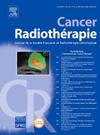最新进展:如何避免不必要的放疗?
IF 1.4
4区 医学
Q4 ONCOLOGY
引用次数: 0
摘要
由于病人病情迅速恶化、并发症、死亡或无法完成疗程,一些放射治疗课程被取消或永久停止,主要是在姑息情况下。这些事件对患者(发病率和死亡率增加、无用的限制)、医疗保健专业人员(道德困境)和部门业务(治疗开始延迟更长时间、资源利用不足)产生负面影响。通过减少非有益(“不相关”)放疗的次数,我们制定了一项八点行动计划,在放射科实施:(1)提供更强的姑息放疗培训(包括初级和继续医学教育,包括沟通技巧和学会在适当的时候说“不”);(2)在初次会诊时对患者进行更严格的评估(评估一般情况、营养状况、支持性护理需求和预后);(3)在模拟或治疗计划过程中遇到困难时,建立专门的小组讨论论坛,加强放射治疗技术会议的作用;(4)更好地根据每个病人的情况定制放射治疗技术(例如,使用强度调制)以及总剂量、分割,特别是对那些风险最大或身体虚弱的病人;(5)改善护理时间表的管理,并确定关键目标,以最大限度地减少延误,使资源和组织适应需求(例如,具有特定指标的“零延误”项目组);(6)在治疗过程中建立医学和多学科重新评估程序,如果适应症出现问题,可导致停止或修改放疗;(7)将姑息放疗纳入个性化的整体支持治疗计划,从不治之症诊断开始,早期姑息治疗介入;(8)评估专业实践(通过定义的指标、满意度调查和发病率-死亡率会议),以推动持续改进。本文章由计算机程序翻译,如有差异,请以英文原文为准。
State of the art: How to avoid unnecessary radiotherapy?
Some radiotherapy courses are cancelled or stopped permanently, mostly in palliative situations, due to rapid decline in patient condition, complications, death, or inability to complete the sessions. These occurrences negatively affect patients (increased morbidity and mortality, useless constraints), healthcare professionals (ethical distress), and departmental operations (longer treatment start delays, under-utilization of resources). By reducing the number of non-beneficial (“non-pertinent”) irradiations, we have developed an eight-point action plan to implement in radiation department: (1) provide stronger training in palliative radiotherapy (in both initial and continuing medical education, including communication skills and learning to say “no” when appropriate); (2) perform a more rigorous assessment of patients at the initial consultation (evaluating general condition, nutritional status, supportive care needs, and prognosis); (3) create a dedicated forum for team discussions and reinforce the role of the radiotherapy technical meeting when difficulties arise during simulation or treatment planning; (4) better tailor radiotherapy technique (e.g., use of intensity modulation) as well as total dose, fractionation, to each patient's profile – especially for those most at risk or frail; (5) improve management of care timelines and define key objectives to minimize delays, adapting resources and organization to needs (e.g., a “zero delay” project group with specific indicators); (6) establish a process for medical and multidisciplinary reevaluation during the course of treatment that can lead to stopping or modifying the radiotherapy if the indication becomes questionable; (7) integrate palliative radiotherapy into the overall personalized supportive care plan, with early palliative care involvement from the time of incurable disease diagnosis; (8) evaluate professional practices (through defined indicators, satisfaction surveys, and morbidity-mortality meetings) to drive continuous improvement.
求助全文
通过发布文献求助,成功后即可免费获取论文全文。
去求助
来源期刊

Cancer Radiotherapie
医学-核医学
CiteScore
2.20
自引率
23.10%
发文量
129
审稿时长
63 days
期刊介绍:
Cancer/radiothérapie se veut d''abord et avant tout un organe francophone de publication des travaux de recherche en radiothérapie. La revue a pour objectif de diffuser les informations majeures sur les travaux de recherche en cancérologie et tout ce qui touche de près ou de loin au traitement du cancer par les radiations : technologie, radiophysique, radiobiologie et radiothérapie clinique.
 求助内容:
求助内容: 应助结果提醒方式:
应助结果提醒方式:


